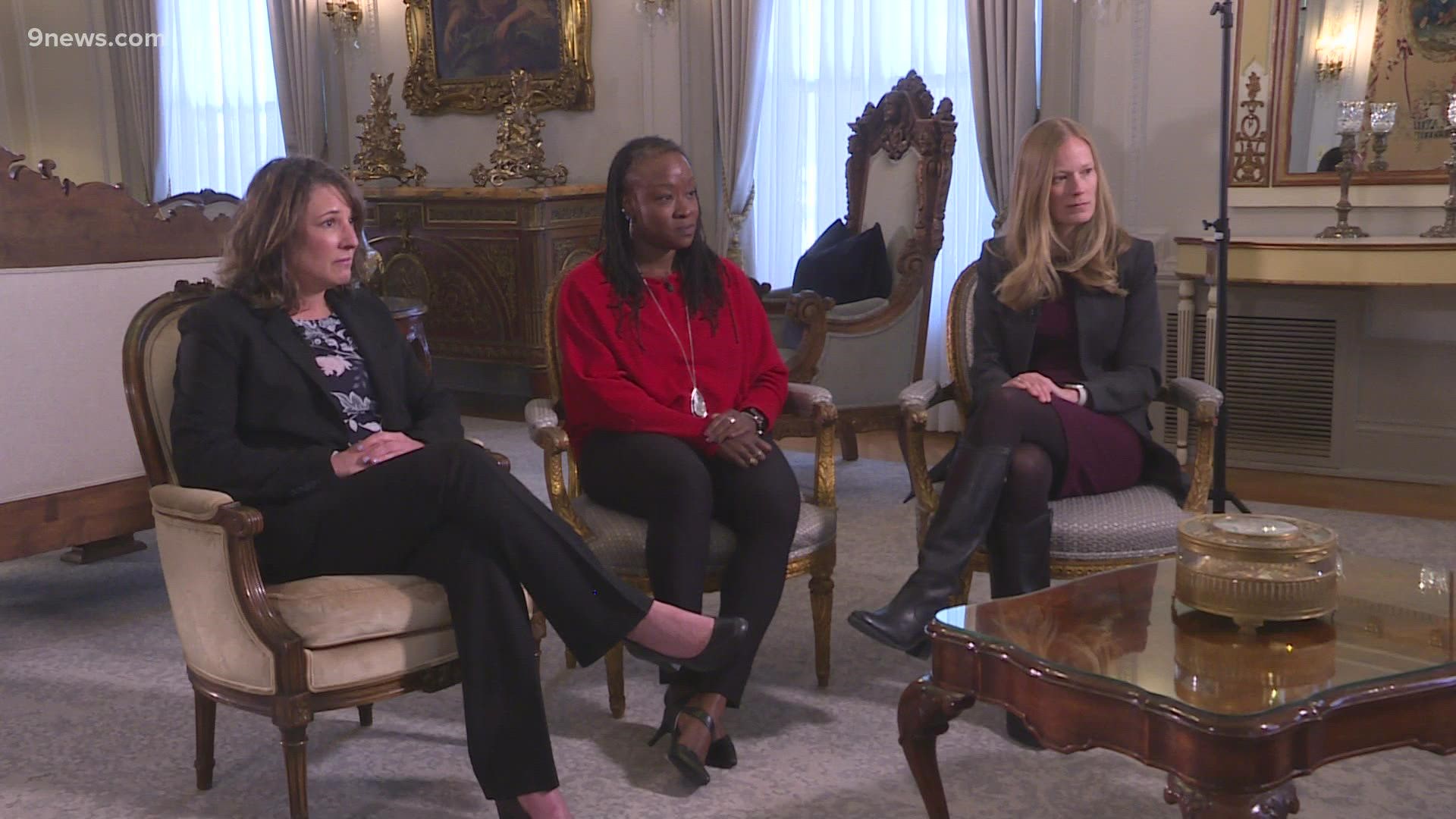DENVER — When the COVID-19 pandemic hit Colorado, women behind the scenes helped guide the state through an unprecedented crisis.
Wednesday, 9NEWS reporter Anusha Roy went to the governor's mansion in Denver to sit down with some of these key decision makers in Colorado -- state epidemiologist Dr. Rachel Herlihy, Health Equity Branch Chief Brandi Emily and Jill Hunsaker Ryan, the executive director of the Colorado Dept. of Public Health and Environment (CDPHE).
Here is part of our conversation with them. You can see more in the video above.
What role did women play in the COVID response?
"We have a number of women in leadership roles," Ryan said. "I think our whole epidemiology lead team was women. Our labor director, Dr. Emily Travanty, is a woman, our communications director is a woman. A lot of women involved, and of course, very successful men involved."
"We are probably first trained scientists, epidemiologists, laboratorians and public health leaders," Herlihy said. "What makes this response historic was probably how many women were in leadership positions."
When that first case was detected in Colorado, what was your first thought?
"I was alone in an office at the state emergency operations center, late evening by myself," Herlihy said. "I got a little emotional. When I saw the first figure that showed the timeline of what was anticipated. The Y-axis went out 18- months to two years. I was realizing what this was going to look like; how many cases there were going to be and how long it was going to last."
Emily, a pediatric nurse, was working in the hospital at the time.
"We were trying to understand how this would affect [pediatrics]," she said.
Emily eventually transitioned to her current role as Health Equity Branch Chief in June 2021 and helped with the vaccine rollout, in particular reaching underserved communities.
Reaction to the domino affect of COVID?
Among the impacts of the pandemic was that many women left their jobs, forced to chose between careers and child care.
"We are all mothers. Some of us, many of us, had young kids at home during all of this," Emily said. "It was understood you would be on Zoom calls and kids in the background. That was just accepted. It was the nature of the response."
These CDPHE leaders watched the ripple effect of COVID closely.
"It's hard to watch, "said Emily, who has many friends in health care. "Dedicated talented nurses leaving the field because of the stress and high levels of loss."
"The tradeoffs in this pandemic have been really difficult -- put the harshest restrictions in place to protect the hospital systems," Hunsaker said.
"This has weighed heavy on me through the pandemic," Herlihy said. "The need to ask more of people."
As we look forward, what would you say you learned in the pandemic?
"There is a study that goes back decades tracking the tendency for children to draw scientists as men versus women," Herlihy said. "Over the years, there's been an increase in proportion of children who draw women. That's important when we think how we are represented by the media and general public."
"Representation matters," said Emily. "I'm a mom of four. It's important to me to be influential in their lives and show you can be a mom and be very successful in your career.
"Seeing us walk the walk means something in the community," she added. "The health equity branch was established in June of 2021. It's not a matter of doing things the way they've been done. It's a commitment to stay the course."
Hunsaker also talked about how CDPHE now has the infrastructure to scale up during an emergency. During COVID, the department added 1,000 staff and a 1,000 contractors.
Dr. Herlihy also said data systems within CDPHE were modernized, which needed to happen for some time, making the department better prepared for future emergencies.

